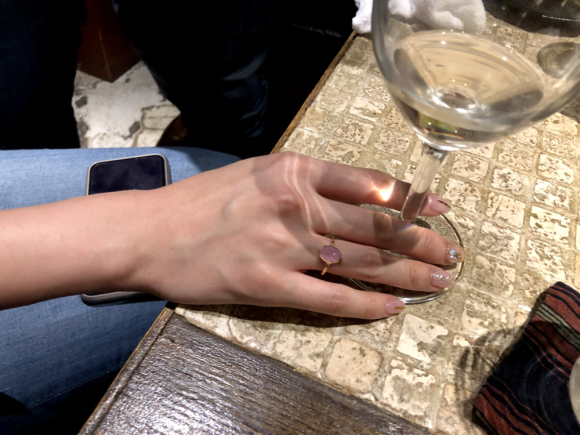
We talked with the motorsports models, one of whom says Japan’s situation is unique compared to the rest of the world.
Formula 1 recently made the announcement that for the upcoming 2018 season, it will be doing away with “grid girls,” female models who have traditionally accompanied drivers to their cars before the start of the race. “While the practice of employing grid girls has been a staple of Formula 1 Grands Prix for decades, we feel this custom does not resonate with our brand values and clearly is at odds with modern-day societal norms,” the organization stated. “We don’t believe the practice is appropriate or relevant to Formula 1 and its fans, old and new, across the world.”
Japan has long been enthusiastically unabashed about pairing attractive women with fast cars for promotional purposes, so much so that there’s an entire sub-section of the modeling industry for “race queens,” as they’re called in the local vernacular. Race queens differ slightly from grid girls, in that instead of being contracted for one race at a single venue, they’re employed by a specific motorsports team and accompany the rest of the group as they travel to various circuits throughout the season, and also represent the team by modeling at conventions and fan events.
Our Japanese-language reporter P.K. Sanjun recently sat down with Ms. A, who’s currently employed as a race queen, and Ms. B, a former race queen, to get their take on F1’s decision.
SN24: Jumping right into it, how do you feel about the abolishment of grid girls in Formula 1?
Ms. B: Well, I can see where the decision is coming from in terms of overseas venues. Motorsports themselves are very popular overseas, and F1 is popular as a pure motorsport. So I don’t think abolishing grid girls will have a negative effect on the sport.
SN24: So do you think the situation is different for Japan?
Ms. B: I think it probably is. In Japan, there’s an inseparable connection between grid girls, or race queens, and F1. There’s a large proportion of attendees whose primary reason for coming out to the circuit on the day of the race is to see them.
SN24: It’s true that at the circuit, there’s always a crowd of fans with fancy cameras taking pictures of them.
Ms. A: Even if their initial reason for coming out is to see the race queens, a lot of them go home with a deeper appreciation of and enjoyment for F1 racing, so I think it’d be a shame to lose that.
SN24: By the way, how does one become a race queen? If you apply for a position as one, is it pretty easy to get the job?
Ms. B: Not at all! The entry barrier to becoming a race queen is really, really high.
Ms. A: Each team selects a certain number of race queens every year. What makes it tough is that the contract is only for one year, so you have to audition again every year.
SN24: Wow, that sounds really difficult. About how many applicants do you compete with?
Ms. A: It depends on the team, but usually you end up with about 50 applicants for every one or two openings.
Ms. B: It’s really competitive. And race queens can’t get by with just an attractive face. They’re looking for someone whose build, physical health, posing, and posture are all high-level, so at the auditions they’re extremely strict.
For women working as convention and event spokesmodels, being a race queen is in a way their ultimate goal on that path. A lot of women get into that field of modeling because they want to eventually become race queens.
SN24: So working as a convention spokesmodel is kind of like training?
Ms. A: There are lots of different events where models work, but for example, at big conventions like the Auto Salon and Tokyo Motor Show, there’s a lot of competition. And then that pool gets narrowed down even more as for who becomes race queens.
Ms. B: When I first started out doing convention modeling, I wanted to become a race queen someday. I don’t think there’s a single woman in Japan working as a race queen who dislikes the idea of what she’s doing. The people protesting the use of models in motorsports aren’t giving those women anything else to do, so I’d be genuinely sad if race queens were to be abolished.
The 2018 Formula 1 season kicks off March 25 with the Australian grand prix, and makes its way to Japan’s Suzuka Circuit on October 7.
Reference: Formula 1
Photos ©SoraNews24
[ Read in Japanese ]



 You can drive this car with a PlayStation controller, meaning Gran Turismo is now real【Video】
You can drive this car with a PlayStation controller, meaning Gran Turismo is now real【Video】 New Japanese video game lets you compete in an international toilet racing circuit
New Japanese video game lets you compete in an international toilet racing circuit Beautiful Japanese race queen goes from trackside to driver’s seat as she becomes pro drifter
Beautiful Japanese race queen goes from trackside to driver’s seat as she becomes pro drifter Chinese stuntman sets Guinness record for fastest lap on Nurburgring using only two-wheels
Chinese stuntman sets Guinness record for fastest lap on Nurburgring using only two-wheels Japanese toilet thrills motorsports fans at Suzuka F1 racing circuit highway service area【Video】
Japanese toilet thrills motorsports fans at Suzuka F1 racing circuit highway service area【Video】 McDonald’s new Happy Meals offer up cute and practical Sanrio lifestyle goods
McDonald’s new Happy Meals offer up cute and practical Sanrio lifestyle goods Studio Ghibli releases new action figures featuring Nausicaä of the Valley of the Wind characters
Studio Ghibli releases new action figures featuring Nausicaä of the Valley of the Wind characters All-you-can-drink Starbucks and amazing views part of Tokyo’s new 170 meter-high sky lounge
All-you-can-drink Starbucks and amazing views part of Tokyo’s new 170 meter-high sky lounge Studio Ghibli glasses cases let anime characters keep an eye on your spectacles
Studio Ghibli glasses cases let anime characters keep an eye on your spectacles McDonald’s Japan releases a pancake pie for new retro kissaten coffeeshop series
McDonald’s Japan releases a pancake pie for new retro kissaten coffeeshop series Super Nintendo World expansion gets delayed for several months at Universal Studios Japan
Super Nintendo World expansion gets delayed for several months at Universal Studios Japan Our reporter takes her 71-year-old mother to a visual kei concert for the first time
Our reporter takes her 71-year-old mother to a visual kei concert for the first time More foreign tourists than ever before in history visited Japan last month
More foreign tourists than ever before in history visited Japan last month Haku is…Chihiro’s dead brother? Studio Ghibli fans blown away by Spirited Away theory
Haku is…Chihiro’s dead brother? Studio Ghibli fans blown away by Spirited Away theory We stress-test Uniqlo’s “Impressive Jacket and Pants” to see if they live up to their names
We stress-test Uniqlo’s “Impressive Jacket and Pants” to see if they live up to their names Disney princesses get official manga makeovers for Manga Princess Cafe opening in Tokyo
Disney princesses get official manga makeovers for Manga Princess Cafe opening in Tokyo Starbucks reopens at Shibuya Scramble Crossing with new look and design concept
Starbucks reopens at Shibuya Scramble Crossing with new look and design concept Beautiful new Final Fantasy T-shirt collection on the way from Uniqlo【Photos】
Beautiful new Final Fantasy T-shirt collection on the way from Uniqlo【Photos】 Is the new Shinkansen Train Desk ticket worth it?
Is the new Shinkansen Train Desk ticket worth it? Foreign English teachers in Japan pick their favorite Japanese-language phrases【Survey】
Foreign English teachers in Japan pick their favorite Japanese-language phrases【Survey】 Beautiful Sailor Moon manhole cover coasters being given out for free by Tokyo tourist center
Beautiful Sailor Moon manhole cover coasters being given out for free by Tokyo tourist center Studio Ghibli releases Kiki’s Delivery Service chocolate cake pouches in Japan
Studio Ghibli releases Kiki’s Delivery Service chocolate cake pouches in Japan Japan’s bone-breaking and record-breaking roller coaster is permanently shutting down
Japan’s bone-breaking and record-breaking roller coaster is permanently shutting down New definition of “Japanese whiskey” goes into effect to prevent fakes from fooling overseas buyers
New definition of “Japanese whiskey” goes into effect to prevent fakes from fooling overseas buyers Our Japanese reporter visits Costco in the U.S., finds super American and very Japanese things
Our Japanese reporter visits Costco in the U.S., finds super American and very Japanese things Studio Ghibli unveils Mother’s Day gift set that captures the love in My Neighbour Totoro
Studio Ghibli unveils Mother’s Day gift set that captures the love in My Neighbour Totoro Domino’s Japan now sells…pizza ears?
Domino’s Japan now sells…pizza ears? New Japanese KitKat flavour stars Sanrio characters, including Hello Kitty
New Japanese KitKat flavour stars Sanrio characters, including Hello Kitty One of Tokyo’s most famous meeting-spot landmarks is closing for good
One of Tokyo’s most famous meeting-spot landmarks is closing for good Kyoto creates new for-tourist buses to address overtourism with higher prices, faster rides
Kyoto creates new for-tourist buses to address overtourism with higher prices, faster rides Sales of Japan’s most convenient train ticket/shopping payment cards suspended indefinitely
Sales of Japan’s most convenient train ticket/shopping payment cards suspended indefinitely Sold-out Studio Ghibli desktop humidifiers are back so Totoro can help you through the dry season
Sold-out Studio Ghibli desktop humidifiers are back so Totoro can help you through the dry season Japanese government to make first change to romanization spelling rules since the 1950s
Japanese government to make first change to romanization spelling rules since the 1950s Ghibli founders Toshio Suzuki and Hayao Miyazaki contribute to Japanese whisky Totoro label design
Ghibli founders Toshio Suzuki and Hayao Miyazaki contribute to Japanese whisky Totoro label design Doraemon found buried at sea as scene from 1993 anime becomes real life【Photos】
Doraemon found buried at sea as scene from 1993 anime becomes real life【Photos】 Tokyo’s most famous Starbucks is closed
Tokyo’s most famous Starbucks is closed One Piece characters’ nationalities revealed, but fans have mixed opinions
One Piece characters’ nationalities revealed, but fans have mixed opinions We asked a Uniqlo employee what four things we should buy and their suggestions didn’t disappoint
We asked a Uniqlo employee what four things we should buy and their suggestions didn’t disappoint Princesses, fruits, and blacksmiths: Study reveals the 30 most unusual family names in Japan
Princesses, fruits, and blacksmiths: Study reveals the 30 most unusual family names in Japan The beautiful booth models of Tokyo Motorcycle Show 2024【Photos】
The beautiful booth models of Tokyo Motorcycle Show 2024【Photos】 Quiz of the Week: Round 6 (Now made with the tears of sad children*)
Quiz of the Week: Round 6 (Now made with the tears of sad children*) Get in the damn drift car, Shinji? Evangelion Tomika toy brings D1 machine home in miniature form
Get in the damn drift car, Shinji? Evangelion Tomika toy brings D1 machine home in miniature form The weird and wonderful Quiz of the Week: Round 3
The weird and wonderful Quiz of the Week: Round 3 Do you know what to look for in a guy? Take this quiz and find out!
Do you know what to look for in a guy? Take this quiz and find out! Quiz of the Week: Round 9 (It’s like a comb-over for your soul)
Quiz of the Week: Round 9 (It’s like a comb-over for your soul) The beautiful booth models of the Tokyo Motorcycle Show【Photos】
The beautiful booth models of the Tokyo Motorcycle Show【Photos】 Quiz of the Week: Round 8 (More fun than a swift kick in the nuts)
Quiz of the Week: Round 8 (More fun than a swift kick in the nuts) 10 car names Japanese bloggers think are funny to foreigners (and 8 that actually are!)
10 car names Japanese bloggers think are funny to foreigners (and 8 that actually are!) Test your might with our weekly quiz of weird and wonderful news from Japan and Asia
Test your might with our weekly quiz of weird and wonderful news from Japan and Asia Quiz of the Week: Round 7 (Because what else are you gonna do? Go outside like a weirdo!?)
Quiz of the Week: Round 7 (Because what else are you gonna do? Go outside like a weirdo!?) New smartphone game turns car models into anime girls with model-worthy looks
New smartphone game turns car models into anime girls with model-worthy looks Japan’s first Dinosaur Race features T. rexes flopping their way across the finish line 【Video】
Japan’s first Dinosaur Race features T. rexes flopping their way across the finish line 【Video】 Cup Noodle in hot water once again for unflattering Grand Slam support ad
Cup Noodle in hot water once again for unflattering Grand Slam support ad Subaru made a car called the Subaru FU*KS, and here’s how the name could have been even dirtier
Subaru made a car called the Subaru FU*KS, and here’s how the name could have been even dirtier Episode of Gunma-chan anime deemed not suitable for children and shelved
Episode of Gunma-chan anime deemed not suitable for children and shelved
Leave a Reply